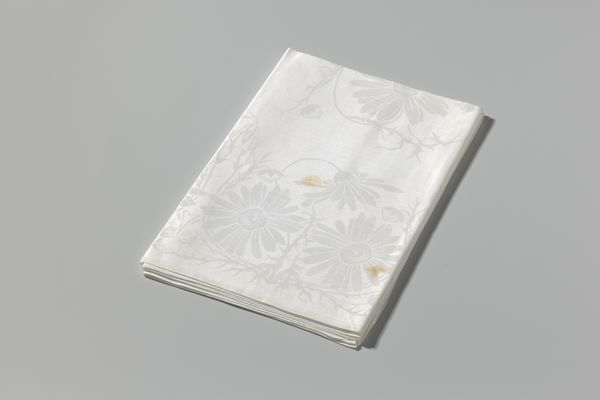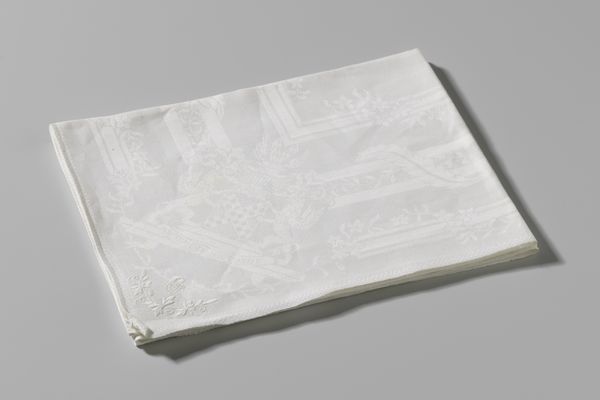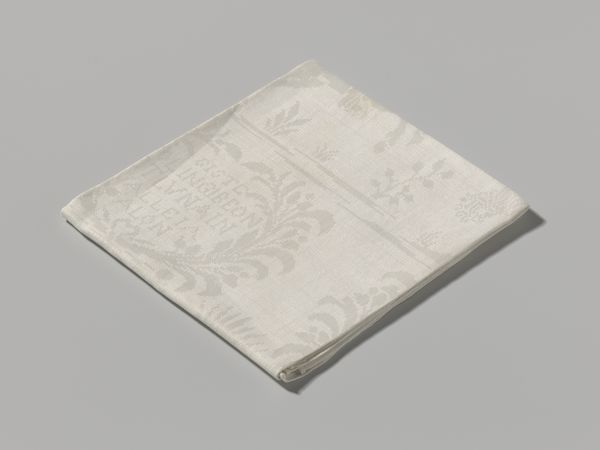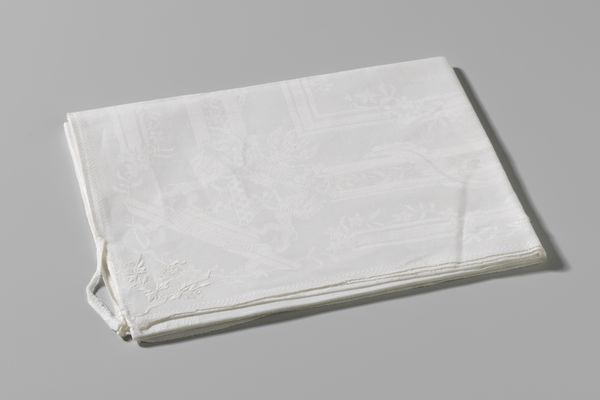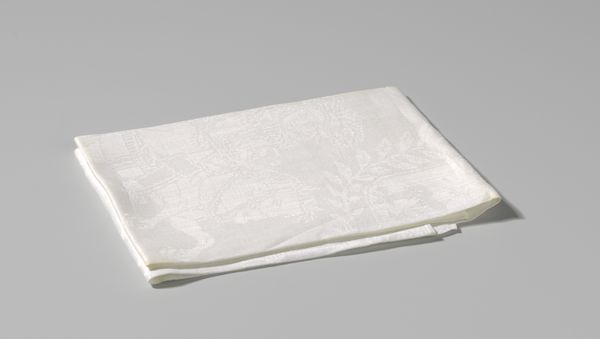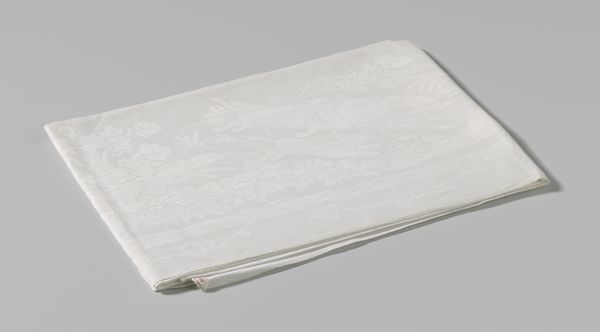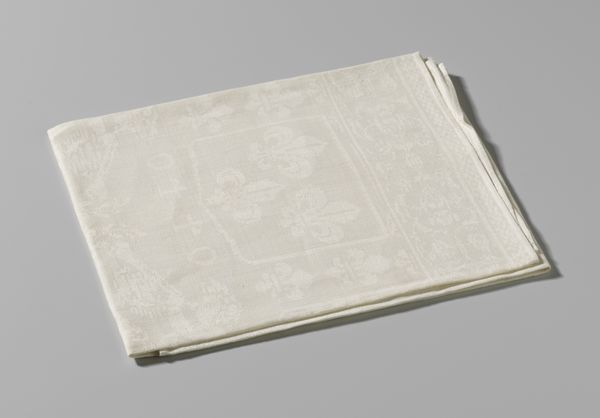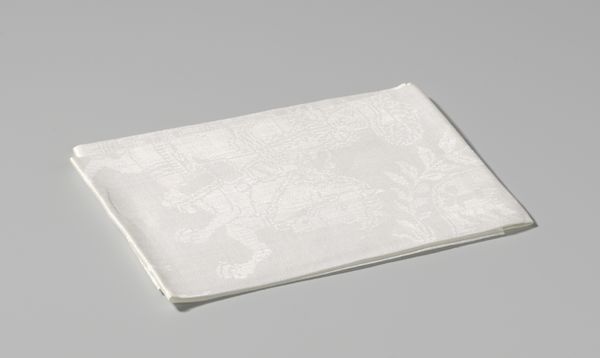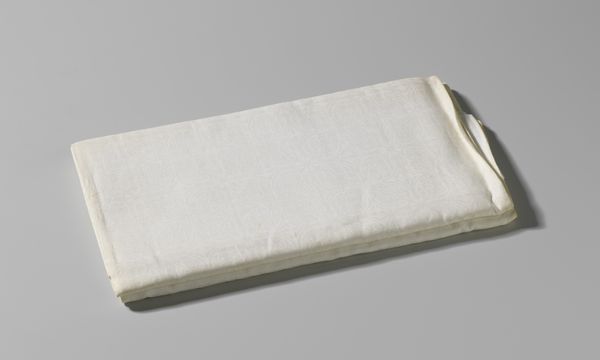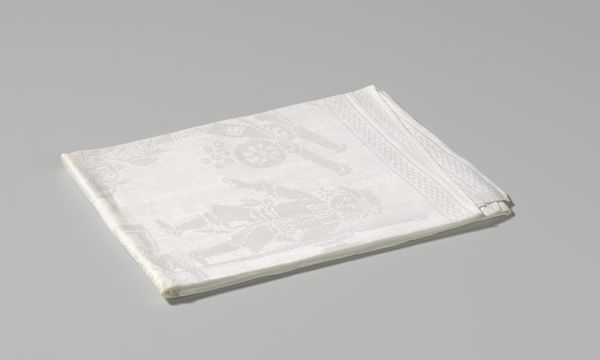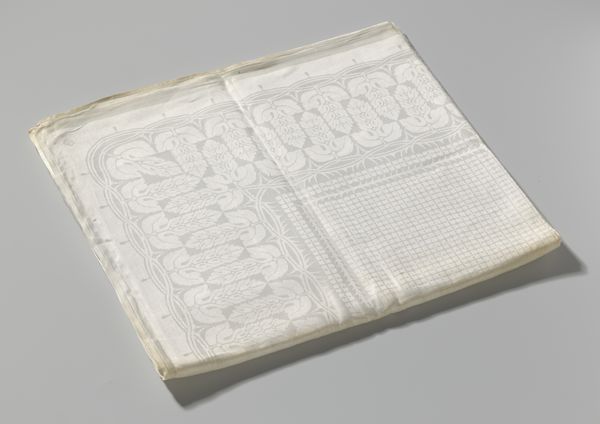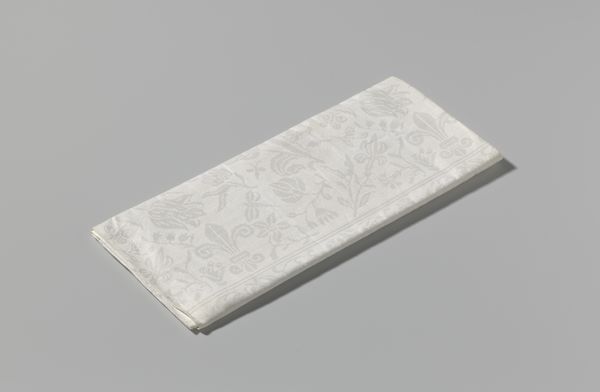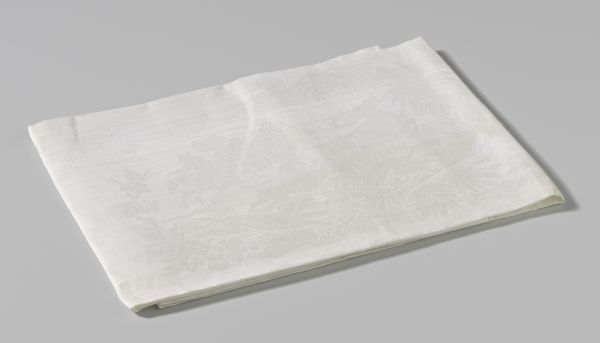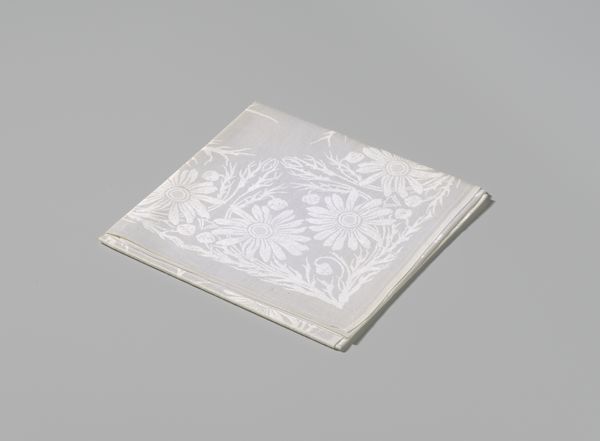
textile
#
textile
#
decorative-art
Dimensions: height 416.0 cm, width 208.0 cm
Copyright: Rijks Museum: Open Domain
Curator: Here we have a damask tablecloth, or "Tafellaken," created sometime between 1852 and 1889 by the firm Gebroeders Rath. Editor: My first thought is one of understated luxury. It seems so pristine, almost ethereal, with its subtly raised oak leaf pattern. Curator: The choice of the oak leaf is deliberate, I think. In Northern Europe, the oak symbolizes strength, endurance, and hospitality—all fitting for a table, a gathering place, and for objects that bear a sense of national or communal identity. Editor: Exactly, but I wonder about the process of crafting this specific tablecloth. The Jacquard loom was pretty sophisticated by that time, allowing for incredibly complex patterns. Considering the detail, it must have taken quite some skill and labor to produce this. Did they outsource or keep everything in-house, I wonder? The subtle contrast, a quiet assertion of refinement, also means it can fade into the domestic sphere. Curator: These subtle visual choices play into established cultural values. What might look merely decorative actually represents a social order where hosting meals, and therefore owning appropriate textiles like this, would imply a high level of socio-economic sophistication and family importance. The oak pattern speaks not just of personal strength, but of a rootedness to community, almost a guarantee of status and inheritance. Editor: I am fascinated by the implications of that—where do these patterns end up? This is a material expression, certainly, but it’s tied to distribution, the market, and those workers executing the designs with varying degrees of control and autonomy. This seemingly simple cloth embodies industrial systems and hidden labour. Curator: Right, the cloth serves almost as an emblem of social solidity and domestic contentment. It almost erases any hint of the complex mechanics needed for its very existence. Editor: I can see that this modest linen presents a deceptively placid image. Thank you for pointing out its symbolism beyond just mere aesthetic. Curator: And likewise, thank you for providing a window into its material history!
Comments
No comments
Be the first to comment and join the conversation on the ultimate creative platform.
